 November 15, 2018 John E. Ross, KD8IDJ, Editor
| |||||||
ARRL Headquarters will be closed on Thursday and Friday, November 22 and 23. There will be no W1AW code practice and bulletin transmissions on those days. The ARRL Letter and ARRL Audio News will be on hiatus for the week of Thanksgiving. Headquarters will re-open on Monday, November 26, at 8 AM EST. We wish everyone a safe and enjoyable holiday. California Fires Spur Amateur Radio Emergency Service Activations Amateur Radio volunteers have been active or are standing by on several fronts as wildfires continue to rage in large sections of California. Camp Fire In Butte County, in northern California, the Camp Fire, the state's deadliest wildfire, triggered a call up of Amateur Radio Emergency Service (ARES®) members for communication support. A small wildfire that started in a mountainous area of Butte County quickly grew, due to high winds. Eventually more than 25,000 people were evacuated. As multiple shelters opened to assist evacuees, five Sacramento Valley ARES groups were called out to support communication between the Red Cross Disaster Operations Center (DOC) and the shelters.
The uncontrolled wildfire eventually consumed the town of Paradise, a town of some 27,000 residents. As of November 14, the Camp Fire covered some 145,000 acres (35% contained), killed more than 40 people, and destroyed nearly 8,000 structures. Utilizing mutual assistance, more than 20 ARES members from five ARES groups are supporting the shelters. ARES members have also been tasked by Red Cross to shadow Red Cross delivery vehicles to provide communication in the mountain areas to the shelters. ARES communication at the shelters has been carried out using voice, Winlink, and email to pass shelter counts, and tactical messages between the shelter and the Red Cross Disaster Operations Center and Cal Office of Emergency Services. The Red Cross is supporting ARES at the shelters with hot spots and backup radios. Working 12-hour shifts, Sacramento Valley Section District Emergency Coordinator 3 Michael Joseph, KK6ZGB, has been staffing the Red Cross radio station as net control for the DOC, passing messages and tracking ARES personnel. Sacramento ARES members have been pitching in as needed. Joseph also has been coordinating ARES deployments as needed. Visit the ARRL Sacramento Valley Section Facebook page or Twitter account for more information. -- Thanks to Sacramento Valley Section Emergency Coordinator Greg Kruckewitt, KG6SJT Woolsey Fire The Woolsey Fire that swept through the westernmost portion of Los Angeles County, including Malibu, and the easternmost area of Ventura County in the ARRL Santa Barbara Section, required the evacuation of more than 200,000 Los Angeles County residents -- an "[G]overnmental radio systems used by fire and sheriff held up well, even though cell phone and internet service went out in many fire areas because of burned utility poles," said Los Angeles Section Manager Diana Feinberg, AI6DF. "Evacuees went to areas where cell phone service was generally available." Feinberg said Los Angeles ARES (ARES LAX) has not been activated because no county hospitals are in the affected area and no hospital outside the fire zone was in danger of losing communication. She added, though, that a sizable team of ARES LAX operators organized by LAX-Northwest District Emergency Coordinator Roozy Moabery, W1EH, did extensive logistics work over the November 10 - 11 weekend at a major drop-off site in the San Fernando Valley for evacuee supplies. ARES team members worked with other volunteers to accept nearly 10 tons of pet food, plus thousands of boxes of items such as soap, toothpaste, toothbrushes, shampoo, conditioner, razors, lotion, feminine care products, and sunscreen, as well as baby food, formula, diapers and wipes, towels and bedding, snacks, and non-perishable food items, Feinberg said.
On the air for the Woolsey Fire, both the Los Angeles County Disaster Communications Service (DCS) -- Amateur Radio volunteers overseen by the Sheriff's Department -- and the City of Los Angeles Fire Department Auxiliary Communication Service (ACS) operated nets and monitored their respective frequencies. "The DCS group at Lost Hills Sheriff Station covers most of the Los Angeles County areas affected by the Woolsey Fire and communicated with organized amateurs in the cities of Calabasas, Agoura Hills, Hidden Hills, Malibu, Westlake Village, and unincorporated mountain areas when not affected by respective mandatory evacuation orders," Feinberg said. "The City of Los Angeles' ACS group was involved when the city's West Hills neighborhood in the San Fernando Valley became the fire's northeastern front, forcing about half of the West Hills community to evacuate." Santa Barbara Section Manager John Kitchens, NS6X, told ARRL that Ventura County ACS (ARES) is supporting evacuation centers and the Red Cross, in the Santa Barbara Section. Feinberg said ACS members have also been involved with delivering food and water supplies to LAFD firefighters and performing fire patrols. American Red Cross volunteers are reported to be using Amateur Radio in connection with some of their fire response activities, Feinberg reported. The Woolsey Fire covers nearly 100,000 acres and was reported 47% contained as of November 14. Read more. -- Thanks to Diana Feinberg, AI6DF Maritime Mobile Service Network Operators Assist Vessel with Ill Crew Member Amateur Radio operators associated with the Maritime Mobile Service Network (MMSN) played a significant part in summoning medical assistance on November 9 for a crew member suffering chest pains on board the 48-foot sailing vessel Marie Elena, some 300 miles east of Bermuda.
MMSN member Donald Plunkett, VA6FH, heard a call for medical assistance at 1650 UTC on the net's 14.300 MHz frequency from Nick Cancro, KC2WRH, the captain of the Marie Elena. Cancro reported that a crew member was experiencing severe chest pains and needed medical assistance. Fellow MMSN operator Fred Moore, W3ZU, of Inverness, Florida, had good propagation with the Marie Elena and contacted the vessel, linking it via a phone patch to the US Coast Guard Station in Norfolk, Virginia. The Coast Guard was able to connect the patient directly to medical personnel via the phone patch to ascertain symptoms and prescribe first aid measures prior to medical assistance arrival. Moore arranged with the Marie Elena to contact him at the bottom of the hour throughout the night and to call immediately if the patient's condition worsened. The US Air Force also came on frequency at the Coast Guard's request to evaluate the situation and see if it could assist.
Due to the sailboat's distance offshore, the Coast Guard directed the captain to head toward Cape Hatteras, North Carolina. The Coast Guard then redirected the cutter Spencer, under way near the Virginia-North Carolina border, toward the Marie Elena. The Spencer rendezvoused with the sailboat at about 1230 UTC on November 10, launching a small boat crew and transporting the man aboard the cutter. A short time later, a helicopter crew was able to hoist the man aboard from the Spencer and transport him to a hospital in Norfolk. Moore was assisted by a relay station Mark Strothmann Sr., KC9YRX, in Wisconsin, who provided much-needed information throughout the incident. Additional MMSN members pitched in as well. "This was a true team effort, and I am proud of the members of this organization who train for just this type of event. They performed in an exemplary fashion," said MMSN Manager Jeff Savasta, KB4JKL. Read more. Southern New Jersey ARES Team Assists in Missing-Person Search Ocean County, New Jersey, Amateur Radio Emergency Service (ARES®) volunteers recently assisted search groups looking for a man with dementia who was reported missing on November 2 from a nursing home in Stafford Township. Searches concentrating on neighborhoods around the nursing home had been unsuccessful. The missing man's family organized a search on November 10, and Ocean County ARES was invited to participate.
Ocean County ARES EC Bob Murdock, WX2NJ, had been informed that the search would focus on a wooded area. Tim Tonnesen, NJ2N, was instrumental in contacting the local authorities and working with the family and search teams to organize a search plan, while Murdock looked after the communications technical side and personnel. Temperatures had dropped overnight to around 32 °F, and it had rained considerably the night before. ARES established a net control station at a nearby park, where power, shelter, and rest facilities were available. The search teams were made up of volunteers from the community -- more than 140 in all -- and the ARES team agreed to coordinate communication among search groups. Ocean County ARES supplied nine radio operators. A VHF repeater proved unreliable for use with handheld transceivers, and communication ultimately took place using a UHF repeater in Toms River, maintained by Ocean County ARES members. Topographical maps were used to plot out the search areas. ARES members assisted in making sure all volunteers had been accounted for. The search continued that afternoon, without success, and volunteers returned to the rallying point. As of mid-week, the missing man had not been located. Read more. -- Thanks to ARRL Southern New Jersey Section Emergency Coordinator Tom Preiser, N2XW The Doctor Will See You Now! "External Speakers" is the topic of the current (November 8) episode of the "ARRL The Doctor is In" podcast. Listen...and learn!
Every 2 weeks, your host, QST Editor-in-Chief Steve Ford, WB8IMY, and the Doctor himself, Joel Hallas, W1ZR, will discuss a broad range of technical topics. You can also email your questions to [email protected], and the Doctor may answer them in a future podcast. Enjoy "ARRL The Doctor is In" on Apple iTunes, or by using your iPhone or iPad podcast app (just search for "ARRL The Doctor is In"). You can also listen online at Blubrry, or at Stitcher (free registration required, or browse the site as a guest) and through the free Stitcher app for iOS, Kindle, or Android devices. If you've never listened to a podcast before, download our beginner's guide. Just ahead: "Station Computers." ARRL Executive Committee Recommends Small Addition to Articles of Association At its October 20 meeting, the ARRL Executive Committee voted to recommend to the full Board of Directors an addition to Article 1 of the Articles of Association of ARRL, per requirements of the Connecticut Secretary of the State. The minor addition is necessary to bring the Articles into alignment with Connecticut state statutes.
Article 1: The name of our corporation shall be The American Radio Relay League, Incorporated. It may be informally referred to as ARRL, the national association for Amateur Radio. Our corporation commenced its corporate existence as The American Radio Relay League, Incorporated, when its Articles of Association were approved by the Secretary of the State of Connecticut on January 29, 1915. The original Articles of Association were subscribed by Hiram Percy Maxim, Clarence D. Tuska, and Lawrence A. Howard. The affairs of the corporation have since that time been continuously governed by a Board of Directors selected by the membership. The Corporation is nonprofit and shall not have or issue shares of stock or make distributions. AMSAT's Fox-1Cliff CubeSat Set to Launch on November 19 AMSAT is counting down to the launch of the next Fox-1 satellite, Fox-1Cliff. According to space news outlet Spaceflight Now, the launch from Vandenberg Air Force Base of Spaceflight's SSO-A SmallSat Express mission, on a SpaceX Falcon 9 vehicle, is currently scheduled for November 19 at 1832 UTC. The launch will involve the deployment of more than 70 government and commercial satellites heading into sun-synchronous polar orbits, including Fox-1Cliff, and Spaceflight Industries engineers have developed a strategy to keep multiple objects in similar orbits from colliding with one another.
For the Amateur Radio FM voice transponder, the uplinks will be 435.300 MHz (67.0 Hz CTCSS tone) and 1,267.300 MHz (67.0 Hz CTCSS tone). The downlink will be 145.920 MHz FM voice and Data Under Voice AFSK digital data at up to 9,600 bps. Transmit power is 600 mW nominal. Fox-1Cliff will be supported by the same FoxTelem software already released. Fox-1Cliff is named in honor of long-time AMSAT member, contributor, and benefactor Cliff Buttschardt, K7RR (SK), who died in 2016. Read more. -- Thanks to AMSAT News Service, with some information from Spaceflight Now Es'hail-2 Geostationary Satellite Launch Said to be Imminent According to AMSAT-Germany (AMSAT-DL), Es'hail-2, the world's first geostationary satellite carrying Amateur Radio transponders, will go into space from Cape Canaveral in a few days. Space news outlet Spaceflight Now says that the SpaceX Falcon 9 launcher is set to launch on Thursday, November 15, between 2049 and 2229 UTC. Positioned at 25.5° E, the satellite will carry an Amateur Radio S-band and X-band payload capable of linking radio amateurs from Brazil to Thailand; it's unlikely that Es'hail-2 will be accessible from North America, at least not with conventional Amateur Radio satellite gear.
The Qatar Amateur Radio Society and Qatar Satellite Company are cooperating on the Amateur Radio project, and AMSAT-DL is providing technical support. Es'hail will carry commercial payloads. Several orbital maneuvers are necessary before Es'hail-2 enters its commissioning phase, which may take several months. Read more. -- Thanks to AMSAT News Service; AMSAT-DL ARRL Staffers, State and Local Officials on Hand for Massachusetts ARISS School Contact ARRL Teachers Institute on Wireless Technology alumnus Mariusz Zielinski, KB1MDS, invited ARRL Lifelong Learning Manager Kris Bickell, K1BIC, Lifelong Learning Administrator Ally Riedel, KM3ALF, and ARRL Communications Content Producer Michelle Patnode, W3MVP, to witness an exciting November 2 Amateur Radio on the International Space Station (ARISS) contact with students at Pathfinder Regional Vocational Technical High School in Palmer, Massachusetts, where Zielinski teaches. Pathfinder Amateur Radio Club students queued up to ask mostly technical questions of NASA astronaut Serena Maria Auñón-Chancellor, KG5TMT.
The Pathfinder ARC said the ARISS project became "a school-wide endeavor, capitalizing on our students' interests in the trades and STEM subjects, giving them an interdisciplinary opportunity to apply their various skill sets." Over the 2-year run-up to the contact, Pathfinder students fabricated the antenna-aiming and mounting hardware. One goal of the project was to "provide an educational opportunity for students, teachers, and the general public to learn about wireless technology and radio science through Amateur Radio," the club described. Palmer Town Councilor Robert Lavoie, Massachusetts Representative Todd Smola, and Massachusetts Senator Anne Gobi were on hand to present a citation of congratulations from the State of Massachusetts House of Representatives. Wearing an "ARISS 2018" t-shirt designed by students, Zielinski told a WWLP television reporter that the successful contact was even more exciting than the Boston Red Sox recent World Series win. Further assistance and support was provided by fellow Teachers Institute alumni and Pathfinder instructors Schley Warren, KA1TDL, and Frank Legassey, KC1IYH, as well as from John O'Donnell, KC1GZB; Susan Grimaldi, WA1SJG, and Al Grimaldi, KB1XG, of the Mt. Tom Amateur Repeater Association. Legassey, an electronics instructor, and O'Donnell, a physics instructor, earned their Amateur Radio licenses during a January 2018 exam session at the school. Read more. Amateur Radio Issues under Discussion in Geneva in Advance of WRC-19 As part of the run up to World Radiocommunication Conference 2019 (WRC-19), three International Telecommunication Union Radiocommunication Sector (ITU-R) Study Group 5 (SG 5) Working Groups have been meeting this week in Geneva. ITU-R Study Groups develop the technical bases for decisions taken at WRCs and develop In addition to WG 5A-1 Chairman Hughes, the larger Working Party 5A includes IARU Vice President Ole Garpestad, LA2RR; IARU Representative Dave Court, EI3IO; CEPT Coordinator Hans Blondeel Timmerman, PB2T, ARRL Representative Jonathan Siverling, WB3ERA, DARC representatives Ulrich Mueller, DK4VW, and Bernd
Mischlewski, DF2ZC, and JARL representative Ken Yamamoto JA1CJP. Jose Costa (Canada/Ericsson Canada) chairs WP 5A. Siverling is the WP 5A rapporteur for ITU Region 2 (the Americas). His report, Liaison Rapporteur's Report on Relevant Activities in Certain Countries in Region 2, emphasized the emergency communications provided by radio amateurs during this past hurricane. While much of the work of WP 5A, and of Working Group 5A-1 in particular, has been on the working document covering Amateur Service spectrum needs and sharing studies with incumbent services in the 50 - 54 MHz band, WG 5A-1 also completed a liaison statement to Working Party 1A (spectrum engineering techniques) and Working Party 3L (ionospheric propagation and radio noise) highlighting Amateur Radio concerns with respect to Wireless Power Transfer (WPT) systems. The primary unease involves spurious and harmonic emissions -- which require additional study, attenuation due to walls and building penetration levels, and separation distance between WPT devices and Amateur Radio antennas. Fears have been expressed that WPT charging for electric vehicles might cause substantial interference on the amateur bands. Read more. SKYWARN Recognition Day 2018 is Saturday, December 1 UTC SKYWARN⢠Recognition Day (SRD) 2018 takes place on Saturday, December 1, from 0000 until 2400 UTC. Developed in 1999 by the National Weather Service (NWS) and ARRL, SRD celebrates the contributions that SKYWARN volunteers make to the NWS mission, the protection of life and property. During SKYWARN⢠Recognition Day, special event stations will be on the air from NWS offices, contacting radio amateurs around the world.
The object of SRD is for all amateur stations to exchange contact information with as many National Weather Service stations as possible on 80, 40, 20, 15, 10, 6, and 2 meters, plus 70 centimeters. Contacts via repeaters are permitted. Stations should exchange call sign, signal report, and location plus a quick description of the weather at your location (e.g., sunny, partly cloudy, windy, rainy, etc.). EchoLink and IRLP nodes, including the Voice over Internet Protocol Weather Net (VoIP-WX), are expected to be active as well. Stations will employ various modes, including SSB, FM, AM, RTTY, CW, and PSK31. While working digital modes, special event stations will append "NWS" to their call signs (e.g., N0A/NWS). It's suggested that during SRD operations a non-NWS volunteer serve as a station control operator. Event certificates are electronic and printable from the main website at the conclusion of SRD. Submit SRD log summaries using the online submission form. In Brief...
The K7RA Solar Update Tad Cook, K7RA, Seattle, reports: A single sunspot appeared on November 13 - 14, yielding a daily sunspot number of 11 over both days. So, the average daily sunspot number for the November 8 - 14 reporting week was 3.1, after no sunspots during the 7 days.
There were no sunspots for 26 days -- from October 18 to November 12. Does this place us near the bottom of the sunspot cycle? Perhaps, or somewhere in that direction. Look at sunspot numbers in 2008 and 2009, during the last solar minimum, and note the long periods with no sunspots. Predicted solar flux over the next 45 days is 68 on November 15 - December 2; 69 on December 3 - 4; 70, 69, and 69 on December 5 - 7; 70 on December 8 - 15; 69 on December 16, and 68 on December 17 - 29. The predicted planetary A index is 5 on November 15 - 24; 8 on November 25; 5 on November 26 - 30; 15 and 30 on December 1 - 2; 10 on December 3 - 4; 8 on December 5 - 6; 12 on December 7 - 9; 10 and 8 on December 10 - 11; 5 on December 12 - 27, and 15 and 30 on December 28 - 29. Sunspot numbers for November 8 - 4 were 0, 0, 0, 0, 0, 11, and 11, with a mean of 3.1. The 10.7-centimeter flux was 69.5, 68.9, 69, 69.3, 68.2, 67, and 67.9, with a mean of 68.5. Estimated planetary A indices were 11, 10, 13, 7, 9, 4, and 3, with a mean of 8.1. Estimated mid-latitude A indices were 12, 6, 10, 5, 6, 3, and 2, with a mean of 6.3. Share your reports and observations. Just Ahead in Radiosport
See the ARRL Contest Calendar for more information. For in-depth reporting on Amateur Radio contesting, subscribe to The ARRL Contest Update via your ARRL member profile email preferences. Upcoming ARRL Section, State, and Division Conventions
Find conventions and hamfests in your area.
. .
Subscribe to...
Free of charge to ARRL members...
| |||||||
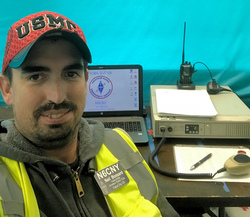
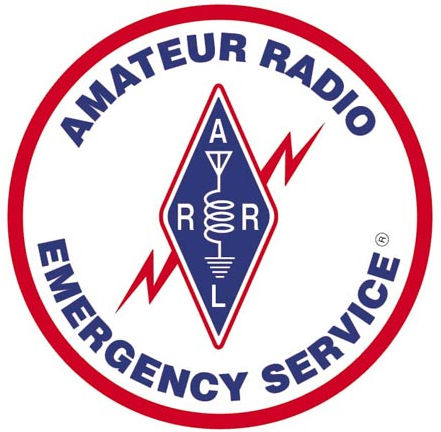 unprecedented number in recent decades. Evacuees included several celebrities, several of whom lost homes in the fire. More than 50 people have died in all fires, and more than 100 are still missing.
unprecedented number in recent decades. Evacuees included several celebrities, several of whom lost homes in the fire. More than 50 people have died in all fires, and more than 100 are still missing..jpg)
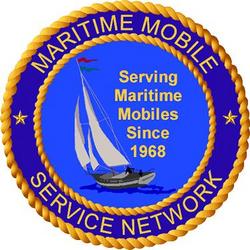 "The assistance we received from the ham radio operator[s] was crucial in helping us communicate with the vessel's crew," US Coast Guard Petty Officer 1st Travis Unser said afterward. Unser was the search-and-rescue coordinator for the incident.
"The assistance we received from the ham radio operator[s] was crucial in helping us communicate with the vessel's crew," US Coast Guard Petty Officer 1st Travis Unser said afterward. Unser was the search-and-rescue coordinator for the incident.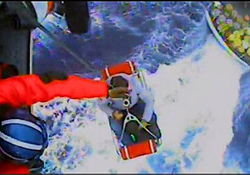
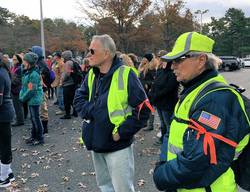
 Sponsored by
Sponsored by  The requirement would add the sentence, "The Corporation is nonprofit and shall not have or issue shares of stock or make distributions," at the end of Article 1. If the full ARRL Board of Directors adopts the Executive Committee's recommendation at its January 18 - 19, 2019, meeting, Article 1 of the ARRL Articles of Association would then read:
The requirement would add the sentence, "The Corporation is nonprofit and shall not have or issue shares of stock or make distributions," at the end of Article 1. If the full ARRL Board of Directors adopts the Executive Committee's recommendation at its January 18 - 19, 2019, meeting, Article 1 of the ARRL Articles of Association would then read: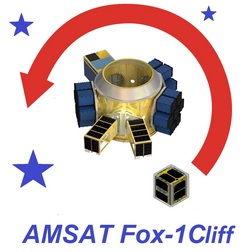 Fox-1Cliff carries the Fox-1 U/V FM repeater, AMSAT's L-Band Downshifter, the flight spare of the AO-85 Vanderbilt University Low-Energy Proton (LEP) radiation experiment, and the standard Fox-1 Penn State University-Erie MEMS gyroscope experiment. Virginia Tech provided a video graphics array camera that's similar to the one on AO-92, but which will provide images at a higher 640 Ã 480 resolution.
Fox-1Cliff carries the Fox-1 U/V FM repeater, AMSAT's L-Band Downshifter, the flight spare of the AO-85 Vanderbilt University Low-Energy Proton (LEP) radiation experiment, and the standard Fox-1 Penn State University-Erie MEMS gyroscope experiment. Virginia Tech provided a video graphics array camera that's similar to the one on AO-92, but which will provide images at a higher 640 Ã 480 resolution.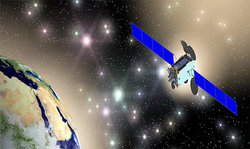 The recent subject of an AMSAT-UK Colloquium
The recent subject of an AMSAT-UK Colloquium 
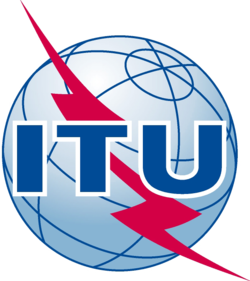 global standards, reports, and handbooks on radiocommunication matters. Working Group 5A-1 (WG 5A-1), chaired by Dale Hughes, VK1DSH, is responsible for Amateur Radio issues. Its primary task is to develop a technical report to support the work for WRC-19 Agenda Item 1.1, considering an allocation of 50 - 54 MHz to the Amateur Service in ITU Region 1 (Europe and Africa) that would be in line with the 6-meter band in Regions 2 and 3. Other services, including broadcasters, utilize the 50 - 54 MHz band in Region 1. The work is in response to WRC-15 Resolution 658 to study spectrum needs in Region 1 for the Amateur Service in the 50 - 54 MHz band, and to study sharing among the Amateur Service and the mobile, fixed, radiolocation, and broadcasting services, in order to ensure protection of these services.
global standards, reports, and handbooks on radiocommunication matters. Working Group 5A-1 (WG 5A-1), chaired by Dale Hughes, VK1DSH, is responsible for Amateur Radio issues. Its primary task is to develop a technical report to support the work for WRC-19 Agenda Item 1.1, considering an allocation of 50 - 54 MHz to the Amateur Service in ITU Region 1 (Europe and Africa) that would be in line with the 6-meter band in Regions 2 and 3. Other services, including broadcasters, utilize the 50 - 54 MHz band in Region 1. The work is in response to WRC-15 Resolution 658 to study spectrum needs in Region 1 for the Amateur Service in the 50 - 54 MHz band, and to study sharing among the Amateur Service and the mobile, fixed, radiolocation, and broadcasting services, in order to ensure protection of these services..jpg)
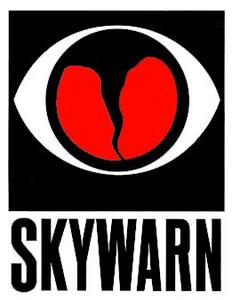 "Amateur Radio operators comprise a large percentage of the SKYWARN⢠volunteers across the country," the NWS announcement said. "Amateur Radio operators also provide vital communication between the NWS and emergency management, if normal communications become inoperative."
"Amateur Radio operators comprise a large percentage of the SKYWARN⢠volunteers across the country," the NWS announcement said. "Amateur Radio operators also provide vital communication between the NWS and emergency management, if normal communications become inoperative.".jpg) An IARU Region 2 ARDF survey is under way. To better understand the needs of enthusiasts in Amateur Radio Direction Finding (ARDF), International Amateur Radio Union (IARU) Region 2 (
An IARU Region 2 ARDF survey is under way. To better understand the needs of enthusiasts in Amateur Radio Direction Finding (ARDF), International Amateur Radio Union (IARU) Region 2 (.jpg) Eastern Massachusetts SEC and SKYWARN Coordinator Rob Macedo, KD1CY, has been recognized for his work. The
Eastern Massachusetts SEC and SKYWARN Coordinator Rob Macedo, KD1CY, has been recognized for his work. The 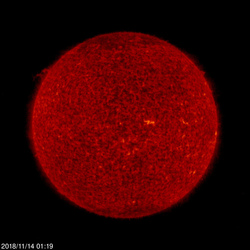 The average daily solar flux rose from 67.7 to 68.5, the average daily planetary A index declined from 12 to 8.1, and the average mid-latitude A index dipped from 8.1 to 6.3.
The average daily solar flux rose from 67.7 to 68.5, the average daily planetary A index declined from 12 to 8.1, and the average mid-latitude A index dipped from 8.1 to 6.3.







